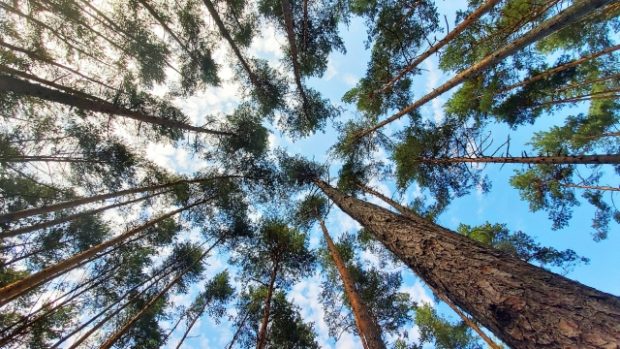How much CO2 can large trees absorb? Scientists may have the answer

The study was conducted in collaboration with NASA. The method consists of using ground-based laser measurements to create detailed 3D maps of giant redwoods in Northern California. Image: Shutterstock/Kletr via AFP Relaxnews.
In order to estimate as accurately as possible the amount of carbon dioxide that large trees can store, researchers have developed an innovative method for obtaining detailed 3D maps of the structure of giant sequoias.
We like walking among them on our Sunday outing, collecting mushrooms at their feet and benefiting from their soothing powers (ever heard of sylvotherapy?), but forests also play a key role in the preservation of our ecosystems. Indeed, trees absorb a significant amount of carbon dioxide released into the environment.
However, it remains difficult to gauge the amount of CO2 that giant trees can absorb. To remedy this, scientists at the University College London in the United Kingdom have developed a laser technique to measure the structure of such trees, which could help determine how much carbon they can absorb, as well as how they might respond to climate change.
“Big questions within climate science in response to rising CO2 levels are whether and where more trees should be planted and how best to conserve existing forests. In order to answer these questions, scientists first need to understand how much carbon is stored in different tree species,” outlined Mat Disney, geography professor at UCL and lead author of the study.
Estimating biomass in high-carbon forests around the world
The study, which was published in Scientific Reports last Oct. 15, was conducted in collaboration with NASA and with the support of the NASA Carbon Monitoring System program. The method consists of using ground-based laser measurements to create detailed 3D maps of trees. The tool was tested on giant redwoods from three sites in Northern California that are home to the world’s tallest trees.
“Large trees are disproportionately important in terms of their above ground biomass (AGB) and carbon storage, as well as their wider impact on ecosystem structure. They are also very hard to measure and so tend to be underrepresented in measurements and models of AGB,” noted Disney.
Currently, the most effective method to measure carbon storage on giant trees is to take measurements of its crown, which is the whole structure including the foliage. This technique, coupled with the laser technique developed by NASA, shows that these large trees are more than 30% heavier than current estimates obtained from other more incomplete methods.
“Our next step will be to extend this application to a global scale in the hopes of improving GEDI’s biomass estimates in carbon dense forests around the world,” said Laura Duncanson, of NASA’s earth sciences division and assistant professor at the University of Maryland. Duncanson is also a member of the NASA Global Ecosystem Dynamics Investigation team. CC
RELATED STORIES:
Global CO2 emissions show biggest ever drop in first half of 2020
Daily CO2 emissions plunge during COVID-19 pandemic lockdowns, with lessons for future — study